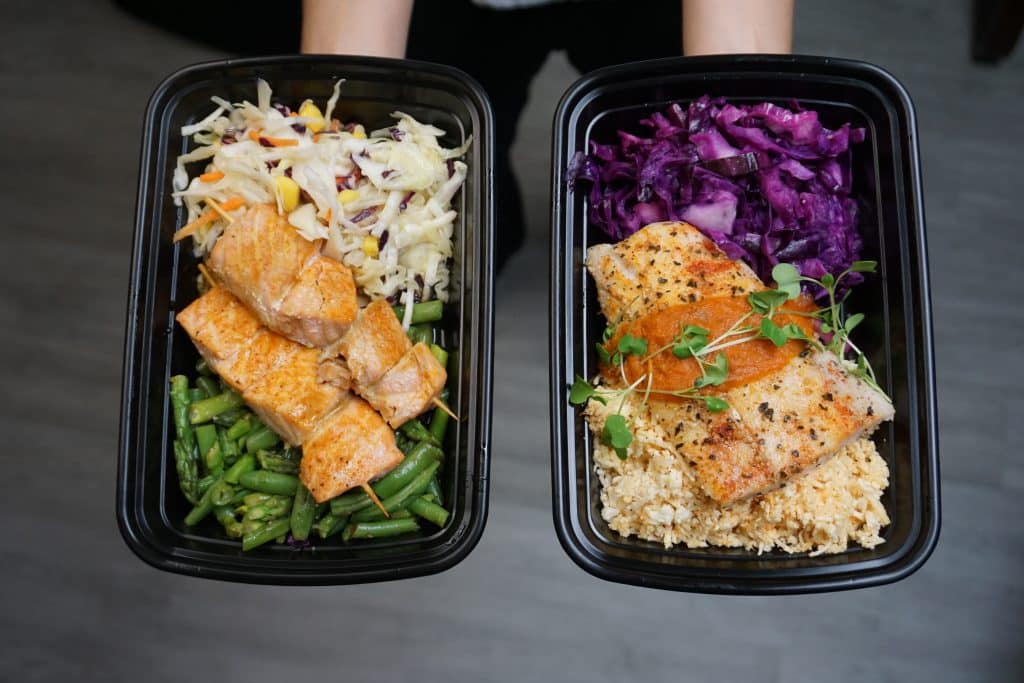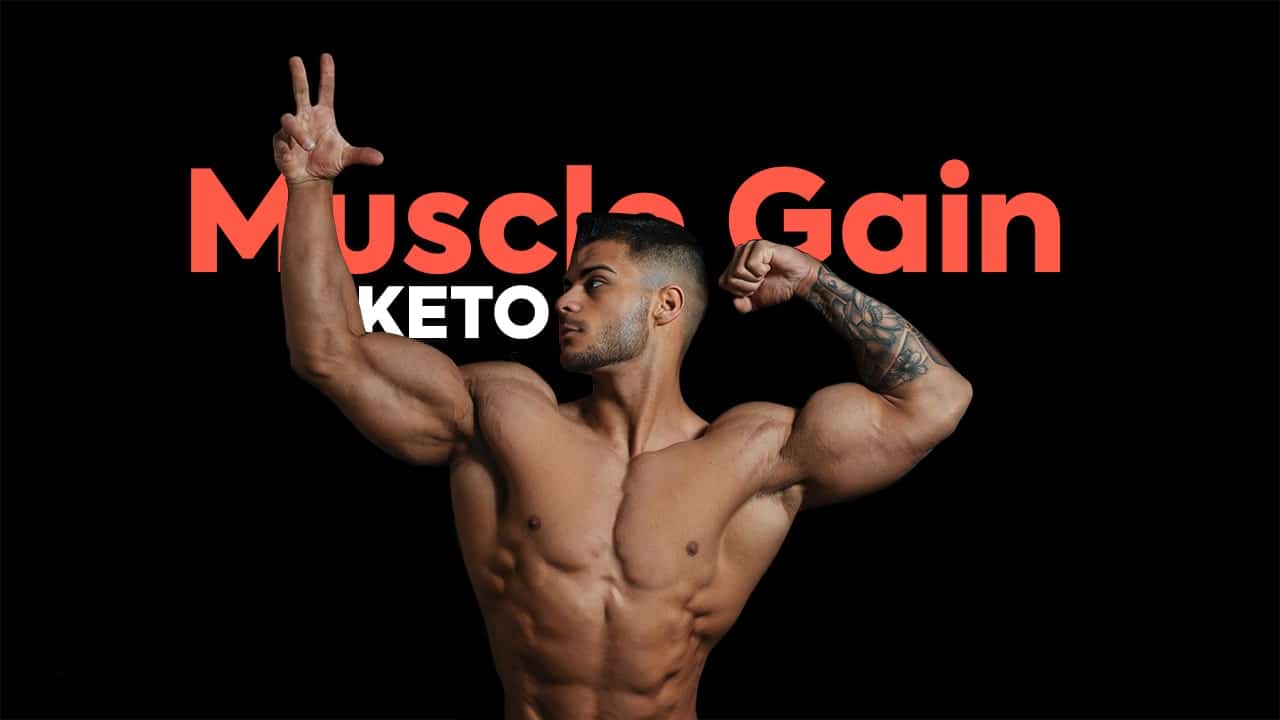To build muscle on a keto plan, with the exception of weight-lifting activities, at least 30% of your weekly meal plan’s total calories must come from high-quality proteins. These are complete, unprocessed animal proteins, that enhance muscle mass. Because a typical ketogenic macronutrient ratio is 75% fat, 25% protein, and 5% carbohydrates.
A low-carb, high-fat diet that is gaining popularity is the ketogenic diet. When you follow the keto plan diet, you essentially cut out all carbs and replace them with fat. However, a lot of people believe that gaining muscle while on a ketogenic diet is challenging, if not impossible.
When you use weights, your body likes carbohydrates uses they release the hormone insulin, which is anabolic.
Table of Contents
Does keto plan allow you to build muscle?
With good reason, a normal bulking diet is strong in carbohydrates. Studies have revealed that diets high in carbohydrates are essential for growing muscle. The idea that you may still gain muscle while considerably reducing your carb consumption may thus appear paradoxical.
Even if you consume all the steak in the kitchen, you won’t gain muscle unless you also strive to promote muscle growth.
In general, you should adhere to a strength program that incorporates progressive overload. It is a form of strength training that gradually raises the tension put on your muscles in order to promote muscular growth (aka hypertrophy).
How is hypertrophy induced? To begin, gradually increase the amount of weight you lift. Working with an expert trainer to create a well-planned muscle-building program that suits your needs is a fantastic option.
Your body uses fat as its main fuel source when you follow the ketogenic diet. That requires drastically boosting your dietary fat intake. Your remaining calories will be made up of fat once your protein and carbohydrate intake have been established.
Your body turns muscle glycogen into ATP for energy at higher rep ranges. Glycogen, a type of quick-burning energy derived from glucose (carbohydrates), will be less accessible if you follow a ketogenic diet (because, carbs).
If this occurs to you, consider increasing your dietary fat intake to provide your cells more readily accessible energy. You might also try increasing your carbohydrate consumption.
Eating well to build muscle on a ketogenic diet
You must eat more food if you want to start gaining muscle while on the keto plan diet. That’s because in order to grow, your muscles require nutrition.
Because muscle is a metabolically active tissue, maintaining those increases requires a lot of energy from your body. For your body to receive all the nutrients it need, you must consume more calories.
On the ketogenic diet, your consumption of dietary fat serves as your main source of energy, but you also need to consume adequate protein.


The building block of muscle is protein. Without enough protein in your diet, your body won’t have the energy it needs to function at its best and your muscles won’t have the building blocks they need to bulk up.
Consider high-protein meals like meat, fish, eggs, and other forms of protein that contain all nine necessary amino acids.
The phrase “calories in vs. calories out” is frequently used while discussing weight loss. This approach is oversimplified opinion since it fails to take into account the reality that not all calories are created equal.
A meal of vegetables and grass-fed protein will provide you with more nourishment than a dish of highly processed food. Thus, when we say “eat to grow muscle,” we imply that you should concentrate on consuming more nutrient-dense whole foods that are compatible with your body, and they should be of the highest quality possible.
The key to bodybuilding on keto plan is prioritizing recovery
Stress from resistance training is constructive stress. Your muscle fibers are really torn apart by strength exercise. When that tissue is repaired by your body, muscle development occurs. Like with any sort of stress, your body needs time, attention, and nourishment to heal effectively.
Chronic stress can affect your normal hormone function, sleep quality, and energy levels, whether it comes from overtraining, lack of sleep, or mental overload.

Additionally, your body must feel secure and prepared to create metabolically active tissue if you wish to stimulate muscular growth. If you experience too much stress, your body will continue to function in the fight-or-flight mode, which is terrible for fat loss: Stress can make your body retain body fat, making it harder for you to experience the benefits of exercise and feel your best.
How should recuperation be prioritized while trying to grow muscle while on a ketogenic diet? One method is to eat enough food.
You should also concentrate on developing lifetime habits for general heath, such as drinking lots of water, getting enough rest, and controlling your stress.
If your body doesn’t feel comfortable and energized, dieting won’t function.
Let’s return to discussing keto in more detail. On the ketogenic diet, you may develop and maintain a powerful body. In fact, research concentrating on men who conduct resistance training demonstrate that the keto plan diet may be utilized to increase muscle mass and burn fat without compromising strength.
The core ideas we stated above still apply to the keto bodybuilding diet, but there is a stronger focus on your macronutrient breakdown, or the proportion of protein, fats, and carbs in your diet.
Eat more of the foods you are currently consume
You should have a calorie surplus to gain muscle while keeping your carbohydrate intake modest to sustain the ketosis state of metabolism. To determine your real calorie intake and if you’re meeting your macronutrient targets, we advise utilizing a meal tracker.
The typical macronutrient composition for ketosis is 75% fat, 25% protein, and 5% carbohydrates. To develop a high-protein keto diet, experts advise a slightly different ratio for keto bodybuilders.
Start with 65% fat, 30% protein, and 5% carbohydrates, keeping the total amount of carbs under 20 grams for the first week, then gradually increase the amount of carbs until you discover the ideal level at which you feel the happiest while still being in ketosis.
Use the macronutrient ratios for keto as a guideline. Diets are very customized, so depending on how you feel, you may need to change your calorie intake and macronutrient distribution.
For instance, if you’ve previously recovered from the keto flu but still feel exhausted. Your body may be requesting extra energy.
Here are two possible solutions:
- Eat extra healthy fats since your body uses fat as fuel when you’re in the ketosis state. Give your body what it needs. You can achieve this by consuming high-quality fat sources, such as those in our Jet Fuel-specific keto meal plan. They easily transform into ketone energy and increase ketone levels.
- Increase your carbohydrate intake if you feel fatigued and see that your workout performance is suffering. Your body may be requesting additional carbohydrates.
- Cyclical keto is a strategy that many individuals find effective. It entails eating low carb for the majority of the week and then having a carb refeed day to refill your glycogen levels.
After working out, you consume 20–30 grams of high-quality carbohydrates on the targeted ketogenic diet, or, for those with really quick metabolisms, up to 50 grams.
This works best when combined with lean protein to trigger an insulin response that replenishes muscle glycogen and starts the process of muscle healing by sending amino acids to the muscles.
Add more protein to your diet for muscle building on keto
Get enough protein on a keto bodybuilding food plan to promote protein synthesis, which builds muscle. According to a study of the literature published in 2011, bodybuilders should consume 0.82 grams of protein for every pound of body weight.
If you connect bodybuilding with lifters slamming protein drinks after workout, this revelation could come as a surprise. In actuality, aiming for a more modest protein consumption and giving quality fat priority is the greatest method to grow muscle on the keto diet.
It will take some self-experimentation to determine your perfect protein consumption. Each person requires a varied quantity of protein, based on their lean muscle mass, weight, and gender.
Start with 0.82 grams per pound of body weight as a general rule of thumb, meaning that if you weigh 150 pounds, you should eat at least 123 grams of protein day.
You may have heard that eating too much dietary protein while following a ketogenic diet might cause you to enter a state known as gluconeogenesis, in which your body turns protein into sugar.
The good news is that this problem isn’t as serious as first believed.
Your protein consumption should ideally come from entire meals, with supplements helping to make up the difference. You can call us for extra information to better understand your protein requirements on a ketogenic diet.
But no matter your diet, to put on some substantial muscle, you need to pound the weights hard!
Tip 1
- You should train with gradual overload. Whenever possible, strive to utilize heavier weights or complete more repetitions with a given weight.
Tip 2
- For gaining muscle, any rep range between 3 and 30 works. 6 to 15 is an excellent place to start practically. Your joints are put under stress when you use big weights all the time, and psychologically draining high-rep training sessions.
Tip 3
- For the best results in terms of muscle growth, you should execute at least 10 sets per muscle group per week.
Tip 4
- As long as your total weekly training volume is the same, it doesn’t really matter how many times you work a particular muscle each week. If you engage in high-volume training, it’s advantageous to spread it out over a number of workouts.
Tip 5
- If you want the best results in terms of muscle building, you should execute at least 10 sets per muscle group per week.
Tip 6
- If your overall weekly training volume is the same, it doesn’t really matter if you work a muscle once a week or five times. If you engage in high-volume training, you gain by distributing your training volume throughout a number of workouts. Otherwise, your sets can lose quality.
Tip 7
- Between sets, take at least a two-minute break.
Tip 8
- Mix compound motions with isolation exercises rather than depending primarily on one or the other. Include a range of exercises to attack your muscle from various perspectives.
You’ve been wanting to try the keto diet, but you’re concerned that it would hinder your ability to grow muscle or get stronger. You may still follow the ketogenic diet if you want to develop muscle. Keep in mind that a good bodybuilding regimen is simply one component of the puzzle.
Build a solid foundation for strength to ensure that your body is prepared to bulk. Increase your caloric intake, pay strict attention to your macronutrients, and place a high priority on sleep and recovery.

